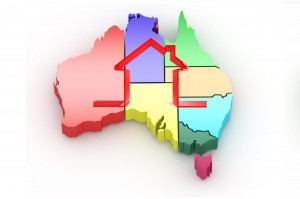Australia’s capital cities saw a cooling of housing market conditions over the seasonally weak month of May with the CoreLogic hedonic home value index reporting a -1.1% fall in dwelling values across the combined capitals. 
The month-onmonth fall was largely the result of declines in Sydney and Melbourne, where dwelling values have recorded significant gains over the current growth cycle to date.
The past three months has seen capital city dwelling values rise by a modest 0.4%, with four of the eight capitals recording a fall.
Reading through the seasonality indicates that value growth in the market has lost momentum, particularly in Sydney and Melbourne where affordability constraints are more evident and investors have comprised a larger proportion of housing demand.
Adding to the complexity in reading the current market is the recent Australian Prudential Regulation Authority (APRA) announcements at the end of March for a new round of macroprudential measures aimed at slowing the pace of interest only lending
Subsequently, Mortgage rates are continuing to trend higher, particularly for investors.
Another factor that is likely contributing to slower growth conditions is a dent in consumer confidence.
According to Westpac, ‘consumer sentiment towards housing shows an increasingly negative view’.
Other market indicators suggest a slower pace of growth such as a reduction in market activity, a moderating trend in auction clearance rates and rising advertised stock levels.
Turnover down: CoreLogic estimates of dwelling turnover for the combined capital cities were tracking 6.9% lower year-onyear.
It appears that housing activity has eased which is attributable to a range of factors including affordability constraints, tighter credit policies, rising mortgage rates and a downturn in consumer sentiment towards housing.

Auction markets moderating: Auction markets remained healthy throughout May, however, there has been some moderation in the clearance rate.
Advertised stock levels nudging higher: The number of residential properties advertised for sale has started to edge higher across some cities, with Sydney in particular seeing a surge in newly advertised stock, up 15% compared with last year, while total advertised listings are now 6.3% higher than a year ago. 
Higher stock levels should provide prospective buyers with more choice and reduce some of the urgency that has been contributing to rapid selling times and price escalation.
Yields stabilising: The moderation in the pace of capital gains at a time when weekly rents are gradually rising has seen rental yields edge higher over the month.
Capital city asking rents were 4.2% higher over the past year; the strongest growth rate since March 2014.
The rise in rents relative to the slip in dwelling values was enough to push gross rental yields off their record lows.
Based on the most recent data from the Australian Bureau of Statistics, investors comprised 48% of the value of new mortgage demand (excluding refinances) in Ma rch, well above the long term average, but the lowest proportion of mortgage demand since August last year.
rch, well above the long term average, but the lowest proportion of mortgage demand since August last year.
Considering we are yet to see the full effect of the recent round of macroprudential measures flow through, there is a high possibility that investor activity, and consequently housing demand, will slow further during 2017.
Investor demand will also be dampened due to higher mortgage rates and tighter credit policies as well as the added disincentive of low rental yields and reduced ability to claim depreciation and travel expenses.
While we are expecting investment activity to slow, the fact is other asset classes aren’t likely to be as attractive as property to investors.
Cash and bonds continue to provide low but safe returns and equities remain volatile.
Considering the alternatives, we are likely to see property investment remain a popular option. 
In closing, the jury is still out on whether the housing market has peaked, however if it hasn’t, a peak could be just around the corner.
Based on CoreLogic data, as well as other indicators, it’s fair to say that growth conditions appear to be slowing in Sydney and Melbourne while the performance across other capital city regions remains mixed.
The housing market remains as diverse as ever and the flow of data over coming months will be critical to get a better understanding of the trends.

No comments:
Post a Comment